Makeup can be intimidating, especially if you’re new to the game. With so many products and techniques to choose from, it can be overwhelming to decide which ones you actually need in your arsenal. And it can add up financially to try a bunch to find exactly what you need in your makeup routine!
Two of the most important makeup products are concealer and foundation. Both can be used to create a flawless base for the rest of your makeup, but they serve different purposes.
The main difference between foundation vs concealer is that foundation is meant to go on your entire face while concealer is meant to go on trouble spots to conceal them. Concealer is used over blemishes or to cover dark eye circles while foundation covers your entire face regardless of any blemishes or not.
Let’s explore the differences between concealer and foundation, and help figure out which one (or both!) is best for you.
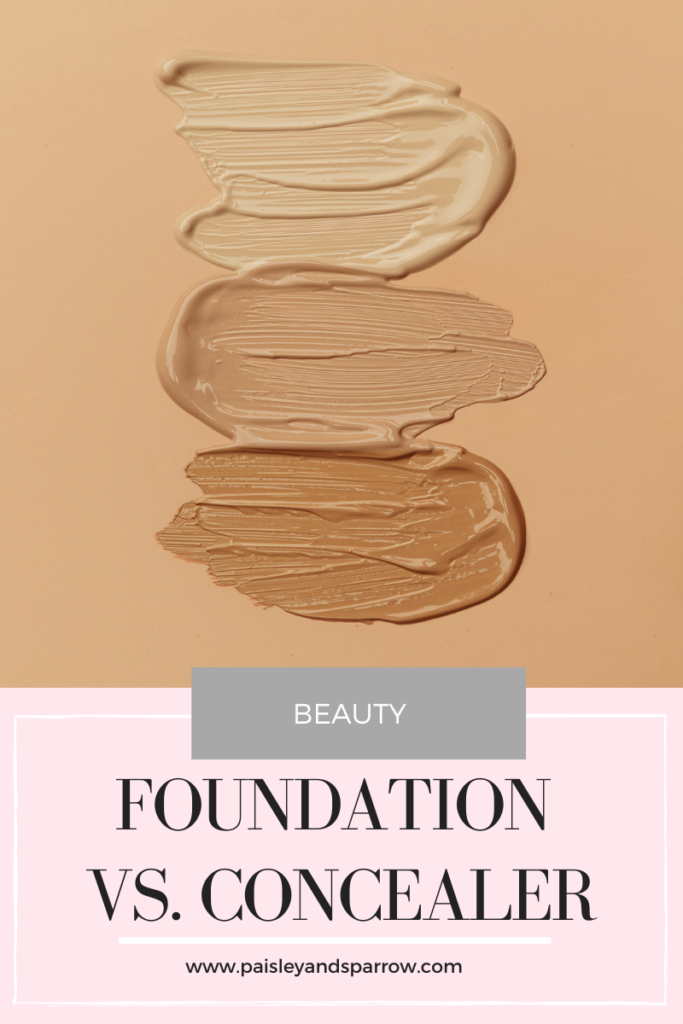
What Is Foundation?
Foundation is a makeup product that is applied to the face to create an even, uniform color and texture. It can help to cover blemishes, discoloration, and other imperfections, as well as provide a smooth base for the rest of your makeup.
There are many different types of foundation, so let’s take a closer look at some of the most common ones.
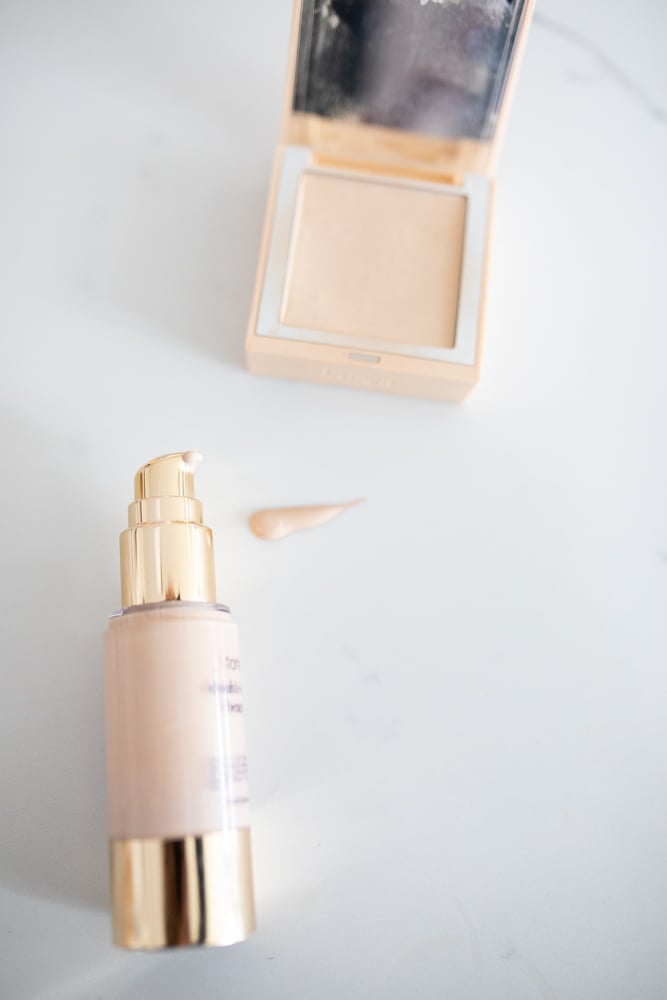
Different Types of Foundation: Which Is Best for You?
Just as different people have different skin types, there are different foundations to best suit those needs. Some people might even use a combination of different types. But which one is best for you?
Liquid Foundation
Liquid foundation is the most common type of foundation, and it comes in a variety of finishes, from dewy to matte. It’s easy to apply and provides buildable coverage, making it a great choice for both everyday wear and special occasions.
Liquid foundation is the best foundations for a more natural look if you have fine lines and wrinkles.
Powder Foundation
Powder foundation is a good choice for those with oily skin, as it can help to absorb excess oil and keep your face looking matte. It’s also easy to apply and can be layered for more coverage.
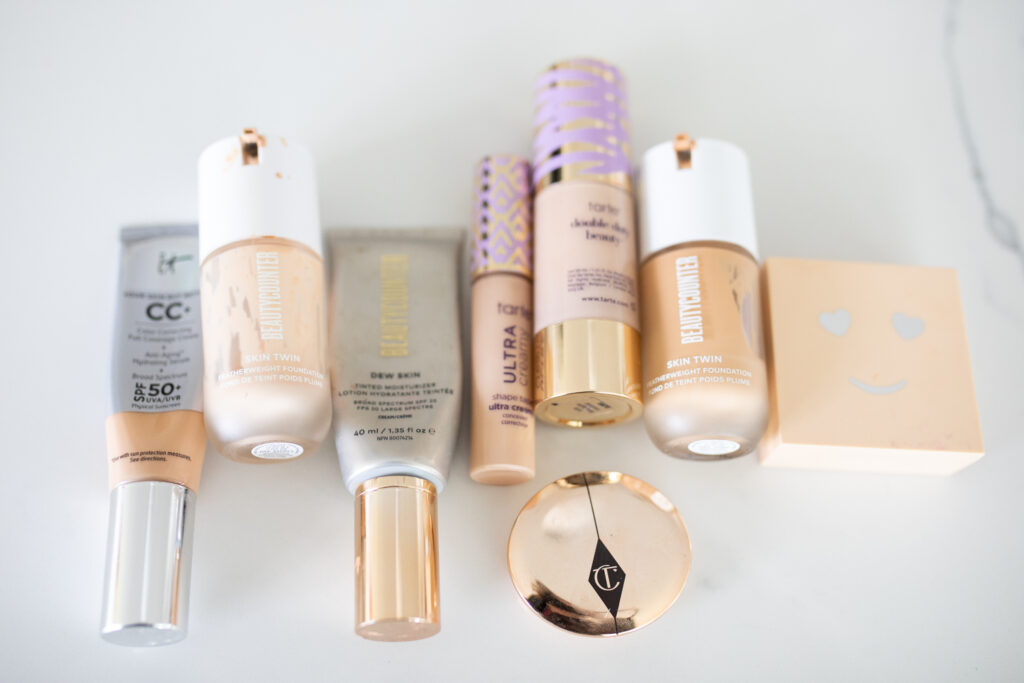
Cream Foundation
Cream foundations are thicker and more opaque than liquid foundation, and provides a more full-coverage finish. It’s best for those with dry or mature skin, as it can help to hydrate and plump up the skin.
BB Cream
BB cream is a hybrid product that combines skincare benefits with makeup. It provides a light level of coverage and has added skincare ingredients like SPF, antioxidants, and moisturizers.
CC Cream
CC cream is similar to BB cream, but it provides extra coverage and color correction. It can help to even out skin tone and cover redness, and also has added skincare benefits.
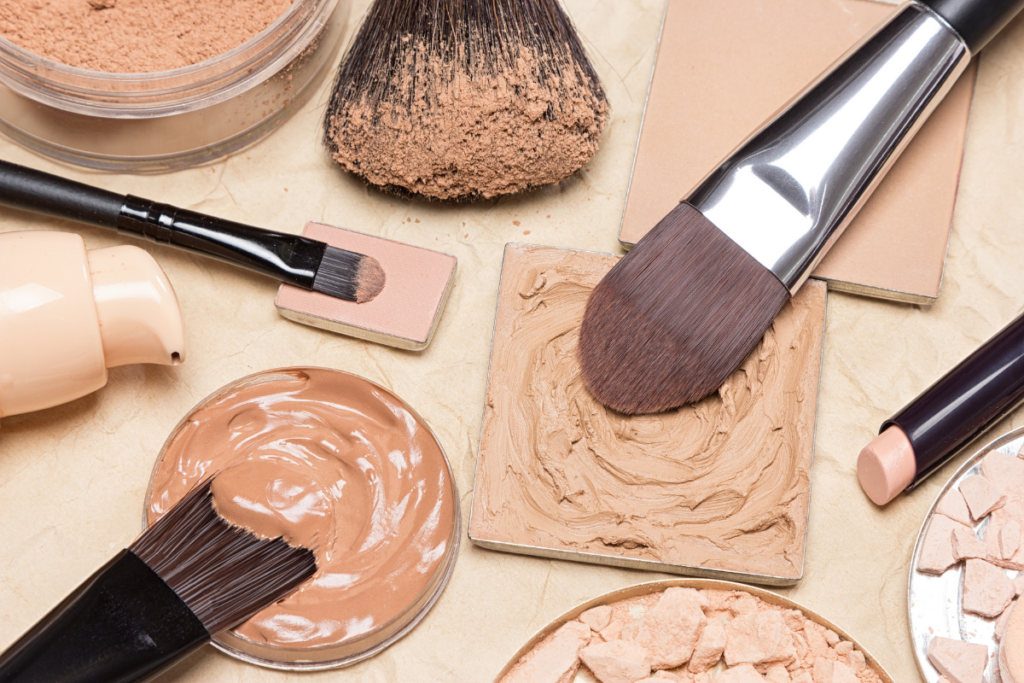
How Do You Apply Foundation?
Regardless of which type of foundation you choose, it’s important to apply it properly for the best results. Here are some tips:
- Start with a clean, moisturized face. Apply a primer if desired.
- Use an application tool like foundation brush or sponge, or your fingers to apply the foundation to your entire face. Start in the center and work your way outward.
- Blend the foundation well, making sure to blend it into your hairline, jawline, and neck.
- Set your foundation with a setting powder if desired.
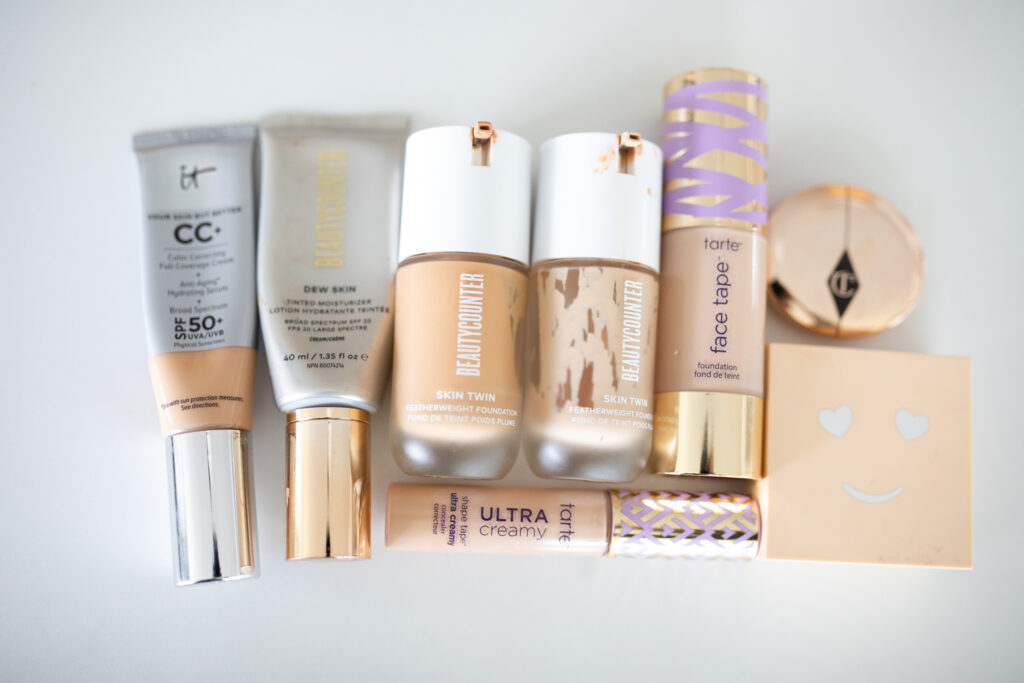
How Do You Find the Right Shade of Foundation?
Finding the right shade of foundation can be tricky, but it’s important to get it right to achieve a natural-looking finish. Here are some tips for finding the right shade:
1. Determine your undertones.
Are you warm-toned (yellow, peach, or golden), cool-toned (pink or blue), or neutral (a mix of warm and cool)? Some ways to figure this out include:
- whether you look better in gold (warm) or silver (cool) jewelry;
- whether your veins appear more green (warm) or blue/purple (cool); and
- whether a white fabric makes your skin look more yellow (warm) or more blue or pink (cool).
You can learn more about cool and warm undertones and details on how to find yours with a quick Google search.
2. Test it
Test the foundation on your jawline, not your wrist or hand, which may not match your face.
3. Check it
Check the color in natural light, as indoor lighting can be misleading.
4. Consider your skin type
Consider your skin type and the finish you want. If you have oily skin, you may want a matte finish, while dry skin may benefit from a hydrating or dewy finish.
Top 3 Foundations
| Product Image | Product Name | Primary Button |
|---|---|---|
What Is Concealer?
Concealer is a makeup product that you can use to cover dark circles, blemishes, and other imperfections on the face. It’s often used in conjunction with foundation to create a flawless base. Concealer is often used as a color corrector.
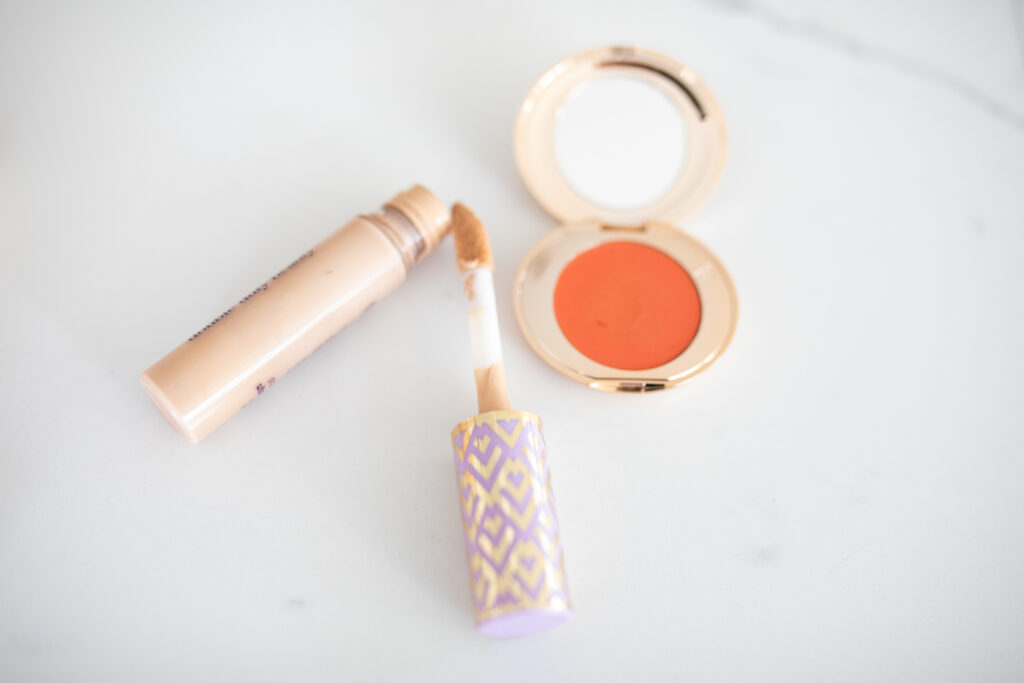
How Do You Apply Concealer?
Here are some tips for applying concealer:
Just like foundation, always start with a clean, moisturized face.
- Apply a small amount of concealer directly onto the area you want to cover.
- Use your finger, a brush, or a sponge to blend the concealer into your skin. Be sure to blend well, so that there are no visible edges.
- Set the concealer with a setting powder if desired.
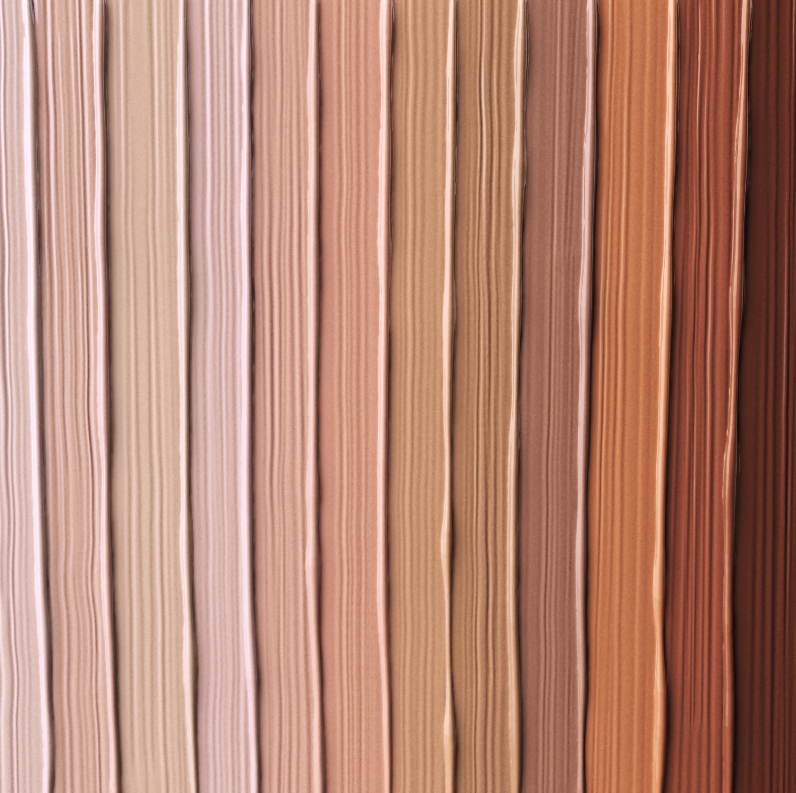
How Do You Find the Right Shade of Concealer?
Finding the perfect match for your skin in your concealer is just as important as finding the right shade of foundation. Here are some tips for finding the right shade:
1. Determine your undertones
Determine your undertones, just like with foundation.
Are you warm-toned (yellow, peach, or golden), cool-toned (pink or blue), or neutral (a mix of warm and cool)? Some ways to figure this out include:
- whether you look better in gold (warm) or silver (cool) jewelry;
- whether your veins appear more green (warm) or blue/purple (cool); and
- whether a white fabric makes your skin look more yellow (warm) or more blue or pink (cool).
2. Test it
Test the concealer shade on the area you want to cover, and make sure it blends seamlessly into your skin.
3. Consider the coverage
Consider the coverage you need. If you’re just covering dark circles, you may want a lighter coverage concealer. If you’re covering blemishes or acne scars, you may need a more full coverage concealer.
Top 3 Concealers
| Product Image | Product Name | Primary Button |
|---|---|---|
FAQ
Concealer is typically a shade lighter than your foundation, as it’s meant to brighten and highlight the areas you want to conceal. However, if you’re using concealer to cover blemishes or other imperfections, you may want to use a shade that matches your skin tone more closely.
You can also get a color-correcting concealer that can help to neutralize redness or discoloration. Different shades work for different purposes.
You can use green to help with redness. Under-eye concealer can be red, yellow, orange or pink since it’s covering more purple tones in the eye area
While you can use concealer to cover larger areas of the face, it’s not a substitute for foundation. Concealer is meant to be used in conjunction with foundation, to create a flawless base.
Yes, you can wear concealer without foundation. If you’re looking for a quick and easy makeup look, you can simply apply concealer to the areas you want to cover, blend well, and set with a powder.
This is a matter of personal preference. Some people prefer to apply concealer first, so that they can see what areas still need coverage. Others prefer to apply foundation first, to create an even base, and then use concealer to spot-treat areas that still need coverage. It’s up to you!
Useful Products, Different Uses
In conclusion, concealer and foundation are both essential makeup products that can help to create a flawless base for the rest of your makeup.
People use foundation to even out your skin tone and provide a smooth base, while they use concealer to cover blemishes, dark circles, dark spots and other imperfections.
When it comes to choosing the right product and shade, it’s important to consider your skin type, undertones, and the coverage you need. With the right products and application techniques, you can achieve a flawless, natural-looking base that will help your other makeup products look their best.
Want more beauty tips? Find the best oils to use with your gua sha, learn about bronzer vs. blush, or pick a good setting spray for your oily skin.
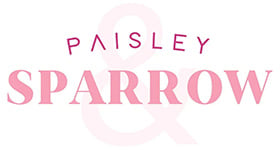
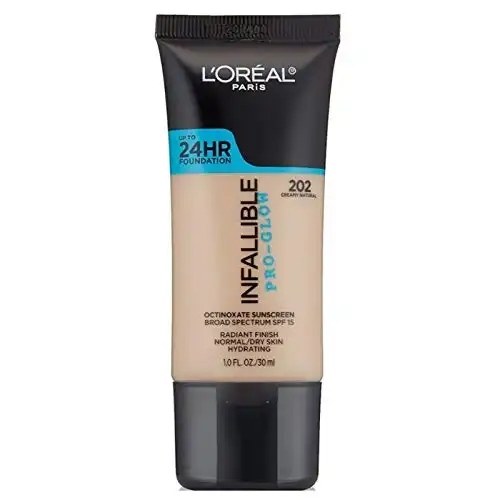
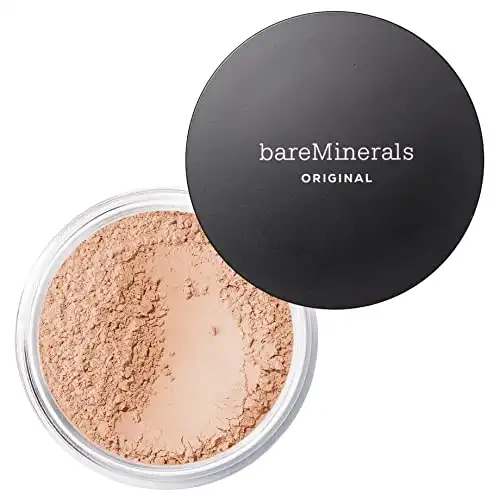
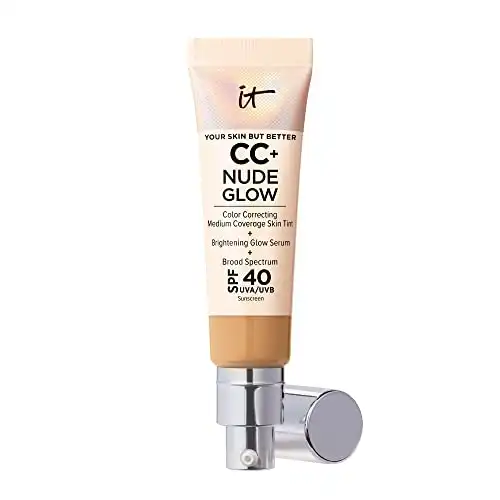
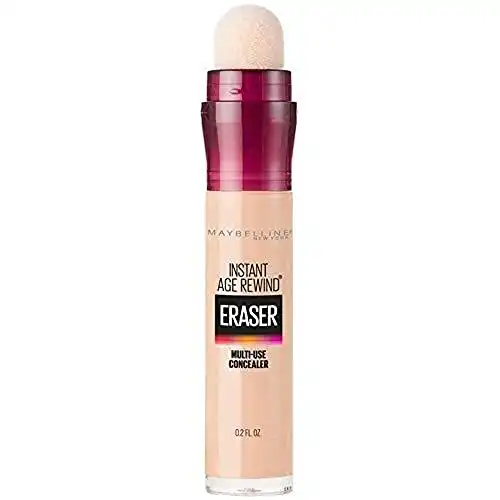
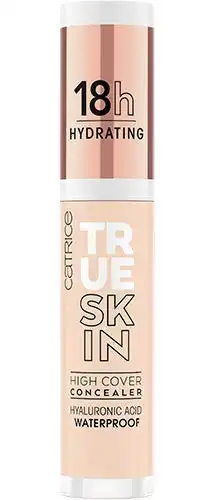
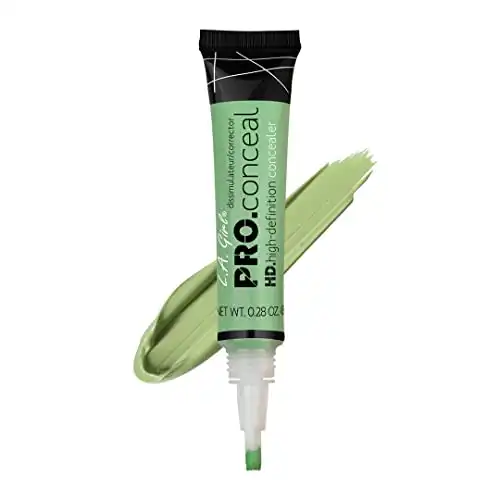
Hi Jen, Love these makeup ideas. But I need extra help. I have a lot of brown (age spots). Help!!! I’m an older woman but I would very much like to have a few nice evenings out with my husband and or family and friends. Maybe a few pictures would be nice. I’ve tried a few things and I don’t want to look like I’m wearing a whole bottle of makeup!!!! Any ideas! Thanks& BTW I had 3 boys. Loved every second of it ❤️
Hi Kimberly! Have you tried a concealer and then using your fingers or a beauty blender to blend it it really well? If you blend it really well then you wouldn’t need a foundation!
Absolutely spot on! Selecting the perfect product and shade is the foundation (pun intended) of any stunning makeup look. Understanding your skin type and undertones is like unlocking the secret to a flawless canvas. And you’re absolutely right, a well-prepped base not only enhances the overall makeup but also boosts the confidence to rock any style. Kudos for sharing these essential tips and tricks for achieving that enviable natural glow!
Thanks so much for the comment! Hope you stick around and read more. 🙂
Hey Jen
I’ve never worn makeup. Where do I start? I’m a woman of a certain age and just want to look different when I go out.
Hi Yvette! Thanks so much for the note! When I first started wearing makeup I started with just some basics – a little concealer for blemishes, a little mascara and some blush to bring some color back to my cheeks.
PS: I could use all of the help you can give. Thank you, Cheryl
Hi Jen. Thank you for the information on foundation and concealer. This gives me ideas on what to look for as I don’t usually wear makeup and wanted to know where to start. Again my thanks, Cheryl
I am SO glad it was helpful, Cheryl!